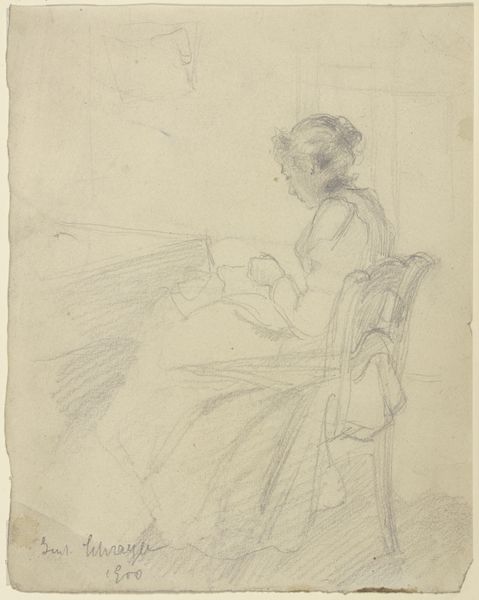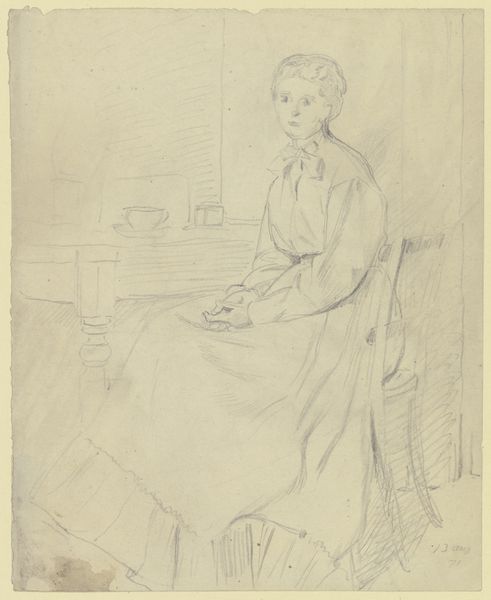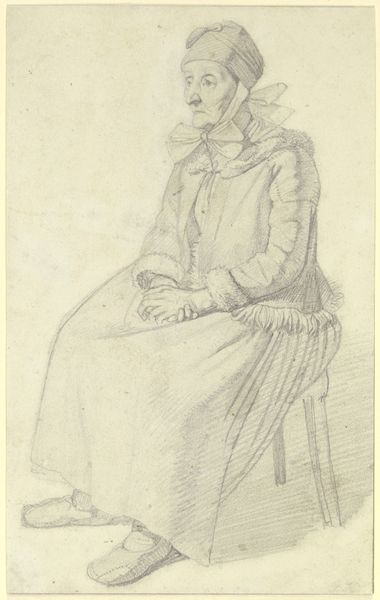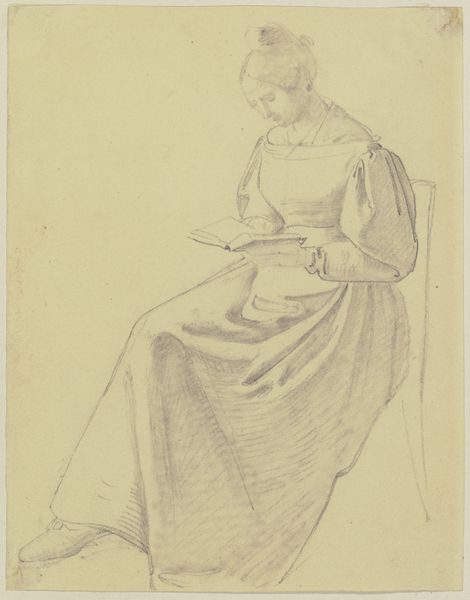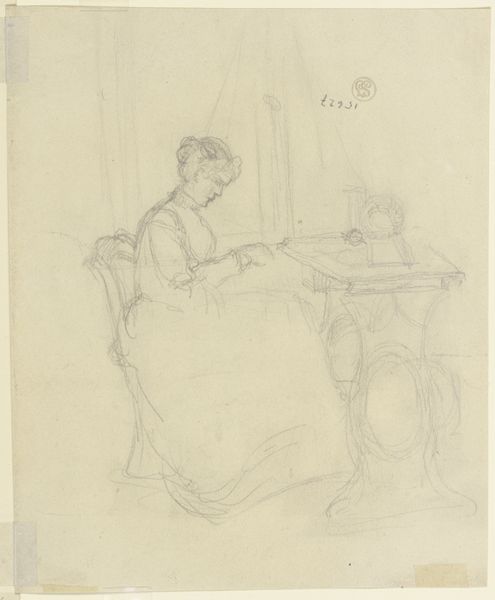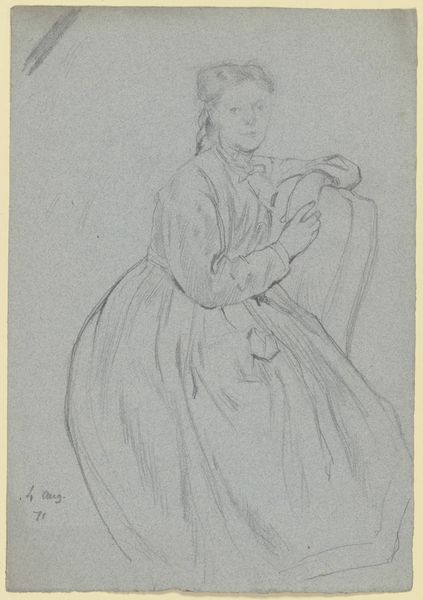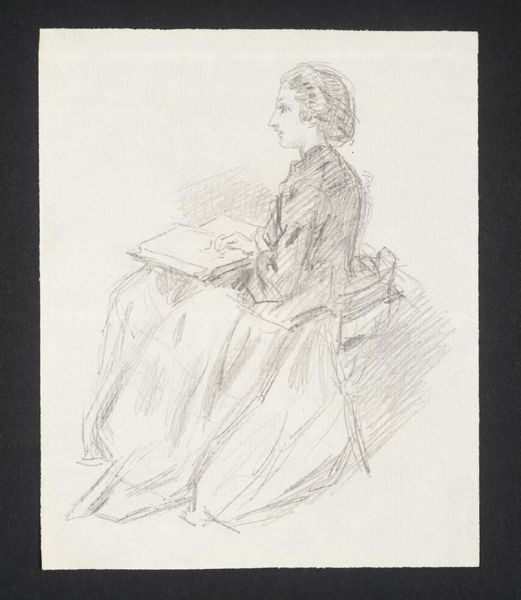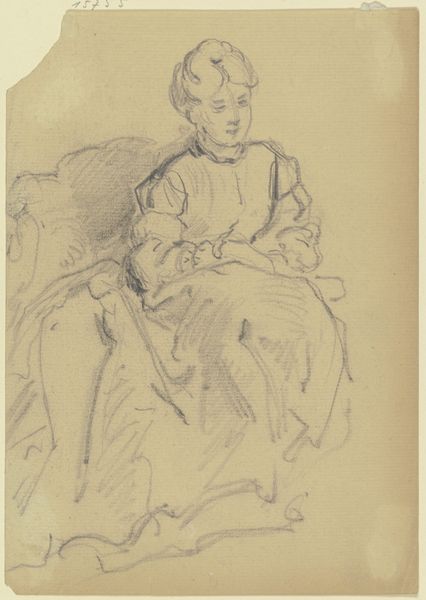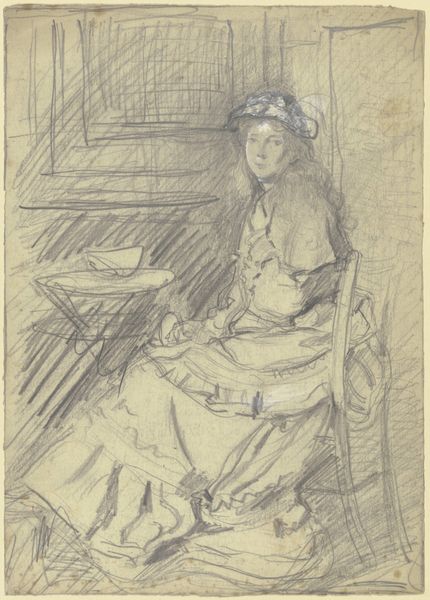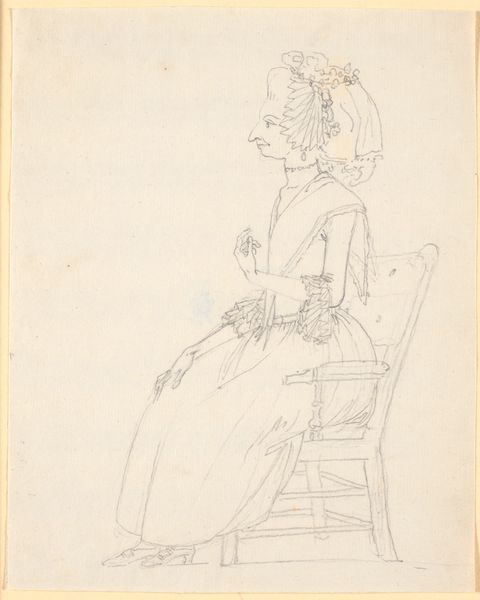
drawing, paper, pencil
#
portrait
#
drawing
#
paper
#
pencil
#
portrait drawing
#
realism
Copyright: Public Domain
Editor: This is Otto Scholderer's pencil drawing on paper, "Luise Scholderer embroidering," created between 1870 and 1871. It has this quiet, intimate quality. What do you see in this piece? Curator: Oh, the sweet intimacy! It’s more than just a portrait; it's a captured moment, a whispered secret between brother and sister, don’t you think? See how lightly the pencil sketches the folds of her dress, yet conveys such a weight, almost as heavy as familial bonds. The domesticity of it pulls me in; embroidery being a delicate expression of quiet patience during a chaotic period. He's not just rendering a likeness but capturing the quiet heroism of the everyday. How does it speak to you? Editor: It definitely makes me think about domesticity, a simpler time… though maybe that’s a naive read! I’m curious, why capture such an ordinary scene? Curator: Ordinary? Or extraordinary in its simplicity! Scholderer elevating a routine activity, I wonder if it's a rebellion of sorts. In those times, grand historical paintings or portraits of nobility were the norm. Here, Scholderer focuses on the quiet dignity of a woman, a sister, engaged in her craft. I imagine Luise concentrating, finding solace in the rhythmic dance of needle and thread amidst the burgeoning societal changes. Almost…dare I say…Van Gogh before Van Gogh. Do you feel it? Editor: That’s interesting, I didn’t consider the historical context so directly. It does add a layer of appreciation to something seemingly so simple. Curator: Exactly! Isn't it fascinating how a simple drawing can whisper volumes about art, life, and quiet revolution? Always digging deeper than meets the eye. Editor: Absolutely! It really highlights how context changes everything. I’ll never look at another portrait drawing the same way.
Comments
No comments
Be the first to comment and join the conversation on the ultimate creative platform.

